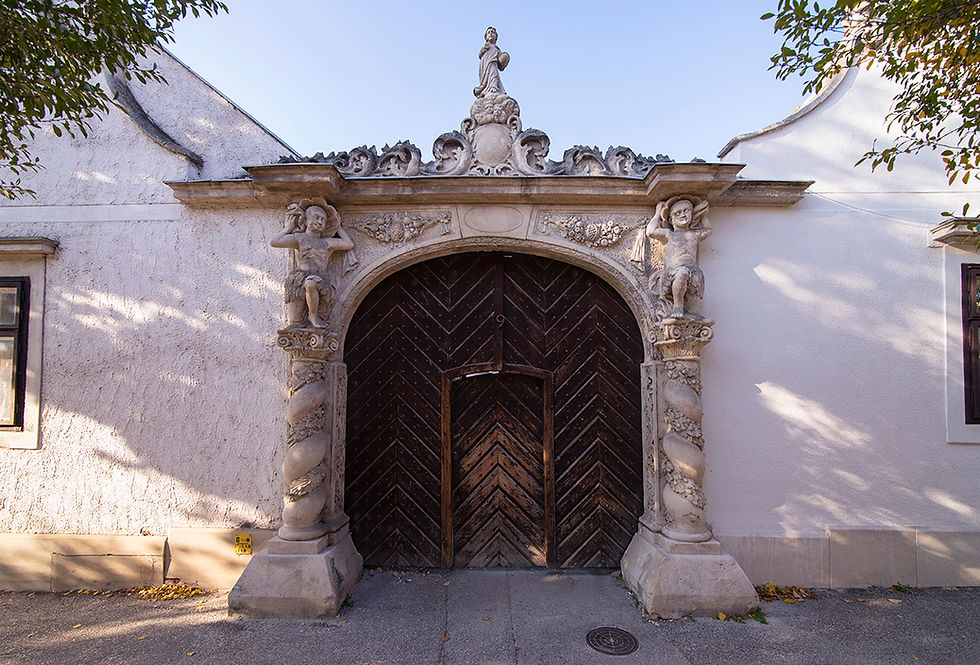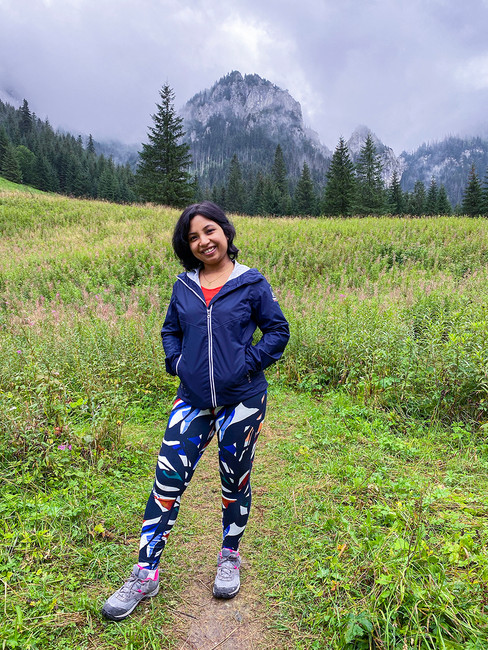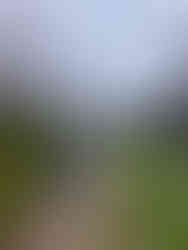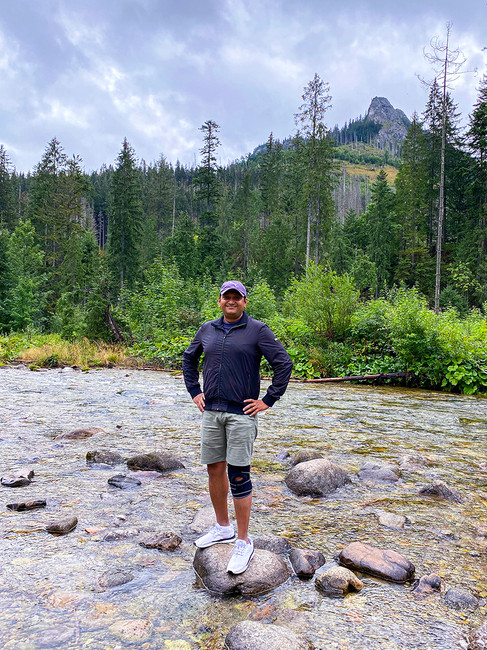- Slow Coach

- Apr 10, 2022
- 6 min read
Colourful touristy town of Sopron
Sopron is located in the north-western corner of Hungary, at the foot of the Alps.
A small outpost of the Roman Empire, called Scarbantia stood where Sopron is today. Its public square was located where the main square of Sopron can be found today. Its Roman city walls have been excavated and are right next to the old town main square. The Hungarians arrived at the deserted Scarbantia during the 9th and 11th century. They reinstated the old Roman city walls, built a castle and called this town ‘Suprun’. The Ottomans ravaged the city in 16th century, the city was also destroyed by a fire in the 17th century. The fire destroyed a lot of the medieval architecture. It also survived multiple bombings during the World War II. However, what survived is the architecture of the old section of town; the excavated foundations from the Roman Empire along with the beautiful mix of Medieval, Renaissance, and Baroque structures. Today Sopron is known for its beautiful old architecture, its affordable dental treatments as well its wines!
Fire tower and Gate of Faithfulness
Fire Tower (Tuztorony)
The fire tower symbolizes the town. It was built upon the ruins of Roman walls and is 58-60 metres tall. The main body of the tower is medieval, its balcony and clock tower are Renaissance, its onion dome is Baroque, all nodding to the different periods of restoration after the infamous fire of 1676, when the upper part of the tower burned down completely. You can climb its 200 spiral stairs, to reach the round balcony which offers an unparalleled panoramic view of the town centre and surroundings and even the Alps on a clear day!
Back in the day, the guards of the tower alerted the town inhabitants of advancing soldiers, wine caravans and any fires. They also sounded their trumpets every quarter of an hour from the balcony. Apart of this they were important part of the community and played music at weddings, festivals as well as funerals.
In the 1921 referendum on the redistribution of borders after the First World War, the inhabitants of the city decided for Sopron to be with Hungary. In honour of this, "Gate of Faithfulness" was installed and decorated with the motto "Civitas Fidelissima" (most faithful citizens).

Inside of Goad Church
Goat Church
This church was built by Franciscan monks in the late 13th century and is located on the southern side of Sopron’s main square, in the centre of the city. It has a Gothic exterior and Baroque interior (resulting from the restoration work needed after the fire of 1676 in Sopron).
In the 18th century, following the dissolution of the Franciscan order, the monastery was closed and a part of it was converted into a hay barn. In the early 19th century, the monastery was restarted by Benedictine monks.
The name comes from a legend that says the church had been built from the treasure unearthed by a goatherd. You can see the depiction of a goat being held by an angel on one of the church’s pillars. It is also said that the funding came from some Henrik Geissel who donated the money as repentance for murdering his family.
The church has grotesque stone carvings, animals with human heads, which represents deadly sins of man. The three naves still retain its original Gothic style after all the restorations. The bell tower is an amazing example of Gothic architecture in Hungary. The baroque marble pulpit and the Széchenyi tomb show the mix of architectural styles that exits today.
The church has witnessed 5 parliament meetings, coronations of 3 kings and queens, as well as been the burial place for the nobility. The most recent renovation happened in 2011, during which a permanent interactive exhibition of cultural and architectural history was installed, which didn’t work when we visited.

The walking path or the Bailey Promenade alongside the medieval wall
Bailey Promenade
The Bailey Promenade surrounds the medieval walls of the Old Town formed in the former moat of the castle wall. Starting near the Fire Tower and following the route of Sopron's medieval town walls, the Bailey Promenade makes for a beautiful stroll, allowing us to stop and marvel at the 1600 years of history. The castle wall today has been completely incorporated into the town, with residential palaces as well as narrow buildings propping up on the filled moat.
There are information boards along the trail, take time to walk and stop and even enjoy a drink at one of quirky shops along the way!

Holy Trinity Statue with the Goat Church in the backdrop
Holy Trinity Statue
This imposing Baroque statue represents the Holy Trinity, the Father, the Son, the dove of the Holy Spirit among golden rays, The monument is located at the main square in the middle of the town and next to the Goat Church. Like others this Holy Trinity statue was erected following a plague epidemic at the end of the 17th century. It was as symbol of gratitude that the town had survived. It is not clear who designed and sculpted this statue. In Central Europe, this was the first twisted column set up outdoors. On the high pedestal the kneeling statue of the two donors was placed. The inscription between them is a chronogram with the text: ‘We made the Holy Trinity a God of the Sopron vows: Father, Son, Holy Spirit.’ The statue was restored several times, the most recent being in 2011 as part of the reconstruction of the Main Square.

Church of the Immaculate Orsolyita
Church of the Immaculate Orsolyita
The Church is situated on Orsolya square (Orsolya ter) in the centre of the city. The Romantic-Neogothic church of the Immaculate Conception was consecrated in August 1864 by János Simor, bishop of Győr.
There was also a convent founded in the 18th century by a Nigerian woman Niggl. The nuns came from Gyor and started educating young girls in the city and thus establishing the first convent in the city. However, in 20th century, the convent was disbanded.
Today we see a neo-Gothic building with a large Gothic window on its facade. Above the Gothic window, there is statue of Mary (Immaculate Conception), and on the two corner pillars there are statues of St. Orsolya and St. Angela Merici. The neo-Gothic tower of the church houses three bells, all three of which are the work of the famous Seltenhofer bell foundry from 1863. The interior of the church has three oak altars. The main altar depicts the Immaculate Conception, St. Angela Merici and St. Joseph, all painted by Polish painter Dobyaschofsky. The original glass windows of the church were completely destroyed during World War II. The church’s current stained-glass windows were made in 1999 and 2014, respectively.

The gate to the House of the Two Moors
House of the Two Moors
Standing proud on Szent Mihály Street is the Két Mór House (House of the Two Moors) which was built in the early 18th century. It is a double house connected by a gate, which is framed by two Corinthian twisted columns, topped by a Moorish figure holding a ledge. Above the ledge is the figure of the little Jesus.
On the gable of the houses, in a circular cabin, is the figure of Mary on one side and St. Joseph on the other. Above them is a sun ornament and two round windows. The wavy edges of the gables are decorated with angels. At the top of the gable are the heads of St. Florian (the patron saint of firefighters) and St. Roch (the patron saint of those recovering from the plague) protecting the house and its inhabitants from fire and plague. It is interesting to note that the Két Mór houses can also be seen in the Mini County Model Park in Sopron.
We were not sure if it was possible to visit inside, we tried knocking but there was no response!
Old Synagogue
The medieval synagogue was built in the early 13th century, one of the earliest pieces of Gothic architecture in Sopron and unique in central Europe.
It was unfortunately closed when we visited Sopron.
Storno House & Collection
Ferenc Storno, who was chimneysweeper turned artist. His sons followed his footsteps and have a significant collection of old relics and artworks in the castle-like Baroque corner house.
It was unfortunately closed when we visited Sopron.

























































